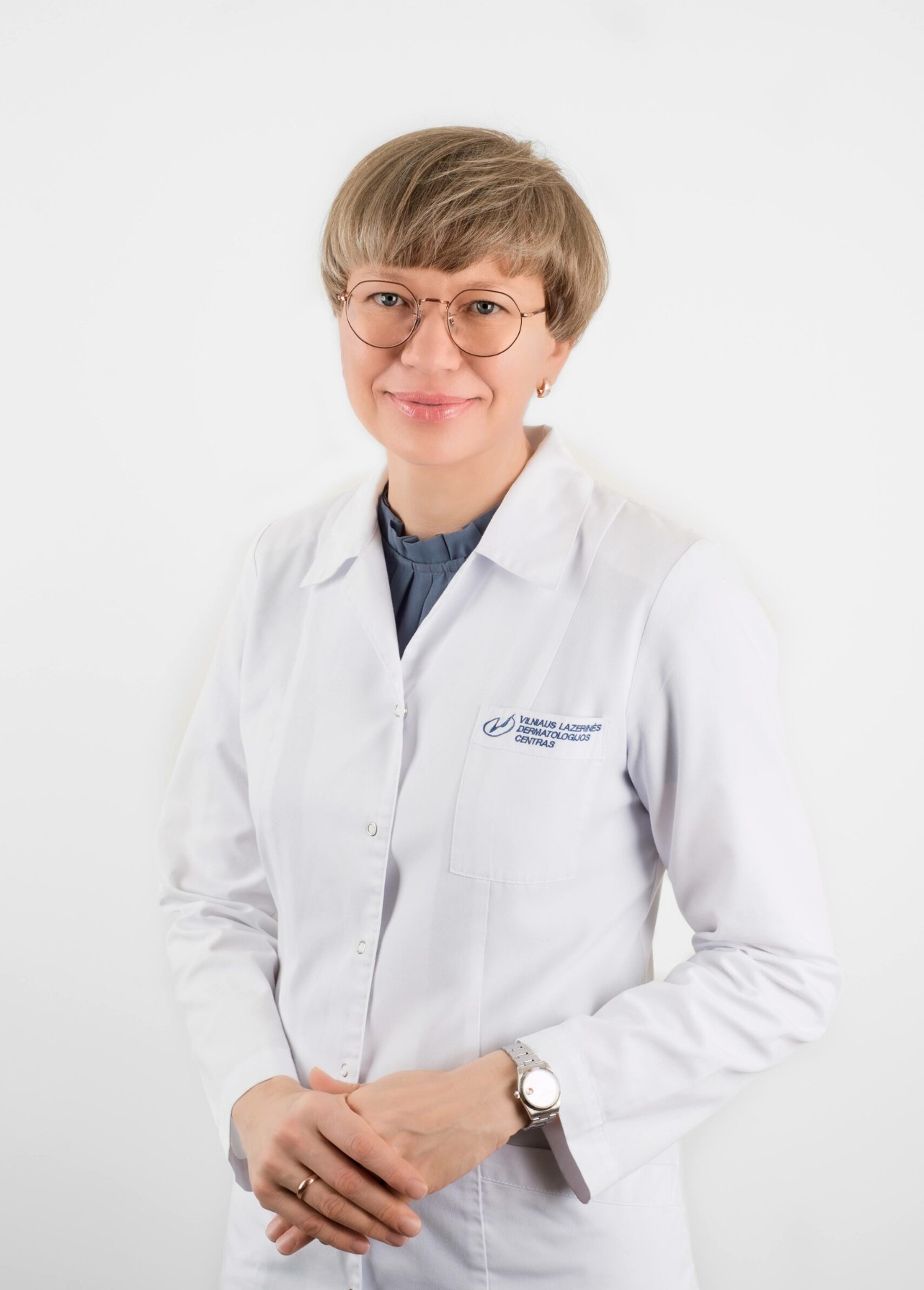Facial redness is a fairly common problem that becomes more pronounced over time. Facial redness is noticeable when the superficial capillaries of the facial skin start to dilate. Capillaries become prominent and facial erythema is most common in women aged between 40 and 50 years old, although the first signs can appear in their 20s and 30s. Facial erythema is most often triggered by a genetic predisposition to vasodilation.
Redness and a burning sensation in the face also occur:
- Changes in ambient temperature (e.g. when you come in from outside to a warm room in winter);
- Watching TV;
- Drinking a cup of coffee or a glass of wine, etc;
- When prescribed treatment with vasodilators.
What are dilated capillaries?
Dilated capillaries are small dilated red, pink or blue spider-like blood vessels on the surface of the skin, most commonly seen on the cheeks, nose and legs. Dilated capillaries are most common on lighter skin types. When many capillaries are dilated in one place, the skin area looks like a red spot or bruise that does not go away.
What influences the appearance of dilated capillaries?
- Ultraviolet rays;
- Sudden changes in temperature;
- Strong winds;
- Smoking, alcohol;
- Certain foods.
Facial redness and dilated capillaries removal procedure
Laser therapy is the fastest and most effective way to reduce and eliminate superficial vascular lesions and facial redness.
At the Laser Dermatology Centre, dilated capillaries and facial redness are removed with intense laser pulsed light. The laser penetrates deeply down to the specific blood vessel and the laser pulse light destroys the blood cells in the blood vessels without damaging the surrounding tissue. This allows visible superficial dilated blood vessels and facial redness to be eliminated without side-effects, which is why patient feedback on this procedure is so excellent. The procedure also results in the disappearance of the aforementioned disease-related complaints. For maximum effect, it is recommended to carry out several treatments, usually 4 to 5, for the treatment of facial redness and removal of capillaries.
After the treatment, the skin may feel hot, the treated area may be swollen and reddened, but this will disappear within a few days after the laser capillary removal treatment, and the final result will be noticeable after a few sessions.
Laser capillary removal is non-invasive and you can go home or to work immediately after the procedure. The facial skin is only slightly red after the treatment.
The procedure usually takes up to 15 minutes. The cost of the procedure depends on the number of capillaries removed or the area of facial redness.
How to prepare for the procedure?
There is no special preparation for the procedure, but you should avoid direct sunlight or visits to a solarium for 4 weeks before undergoing a laser facial redness or capillary removal procedure. You should also stop taking anticoagulants a few days before the procedure.
Is the procedure painful?
The procedure is not painful, the pulses of laser light cause a tingling sensation, but local anaesthesia is possible if the patient wishes.
It is important to know that laser treatment of facial redness and removal of dilated capillaries is not performed:
- During pregnancy or breastfeeding;
- When the facial skin is tanned;
- Skin prone to scarring;
- In summer, spring.
Before selecting a treatment for facial redness and laser capillary removal, it is necessary to consult a dermatologist who:
- assess the facial skin, its type;
- the degree of disease progression;
- discuss the possible effectiveness of the procedure;
- discuss the number of treatments required and recommended;
if necessary, perform a test to assess the sensitivity of the facial skin and the skin’s reaction to the laser treatment.
It is important to remember that therapeutic laser capillary reduction and redness reduction treatments are best performed in autumn or winter. After the treatment, the skin should be protected and cared for according to the recommendations of the dermatologists.
For effective treatment, the following is recommended after the capillary removal procedure:
- Avoid sunbathing or sunbeds for 3 to 4 weeks;
- Be sure to use SPF50+ sunscreen;
- Avoid vigorous exercise, sauna, sauna;
- Also, avoid hot coffee and alcohol during the course of treatment;
- Observe other recommendations and instructions of your doctor.
It is very important to note that the development of dilated capillaries and facial redness is strongly influenced by lifestyle, smoking, alcohol, exposure to the sun, medications and other factors that make dilated capillaries and facial redness prone to recurrence.




